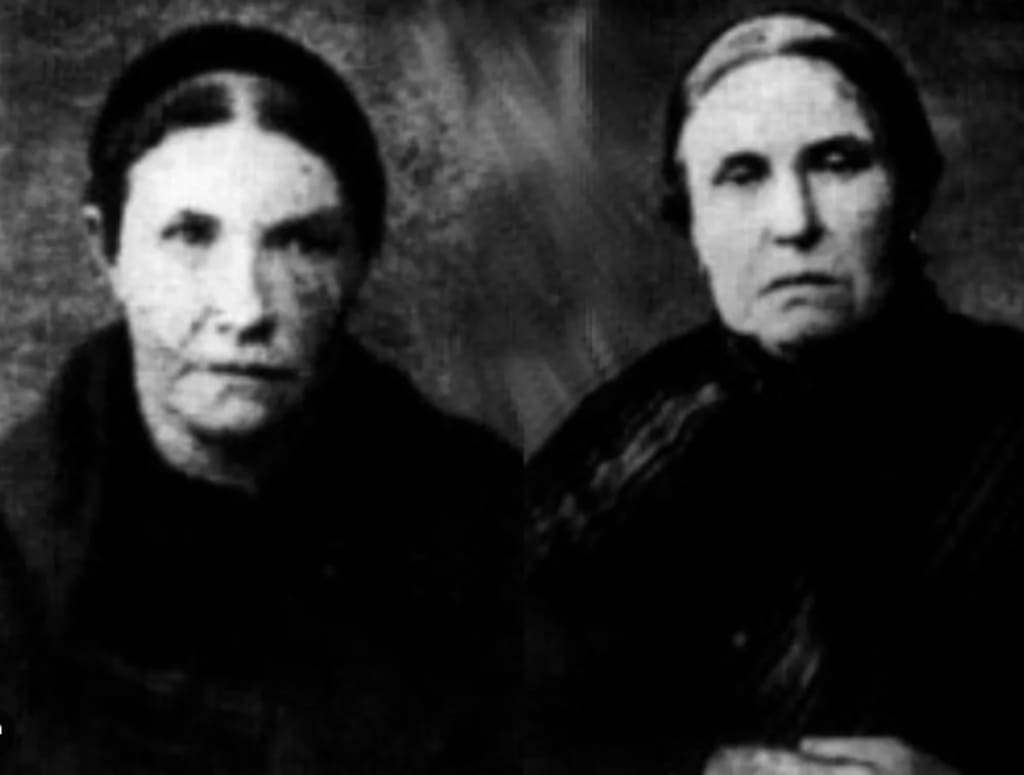Serial killer sisters who became known as the Black Widows of Liverpool
In the bustling industrial city of Liverpool during the late 19th century, two sisters, Catherine Flannigan and Margaret Higgins, wove a dark web of deceit and murder. Known as the Black Widows, they preyed on their own family members and acquaintances, using life insurance policies and arsenic poison to amass wealth. Their chilling story of greed and cunning ultimately led to their capture and execution, highlighting both the depths of human cruelty and the resilience of justice.

The story of the Black Widows of Liverpool is a chilling narrative of deceit, murder, and the relentless pursuit of justice. Catherine Flannigan and Margaret Higgins, sisters with a dark past, orchestrated a series of poisonings in the late 19th century that shocked the nation. This tale not only highlights the depths of human cruelty but also the resilience of the justice system in bringing perpetrators to account. As we delve into the grim details of their crimes, we find a story that is as compelling as it is horrifying.
The Emergence of the Black Widows
Catherine Flannigan and Margaret Higgins lived in Liverpool during the late 1800s, a time when the city was bustling with industrial activity and its population was growing rapidly. Beneath the surface of this burgeoning metropolis lurked the sinister activities of the Flannigan sisters. Motivated by greed and a ruthless disregard for human life, they embarked on a murderous spree, targeting their own family members and acquaintances.
The sisters' modus operandi was as simple as it was deadly. They took out life insurance policies on their victims, often without their knowledge, and then administered lethal doses of arsenic. The deaths were initially attributed to natural causes, allowing the sisters to collect the insurance payouts without arousing suspicion.
The Crimes Unveiled
The first known victim of the Black Widows was Thomas Higgins, Margaret's husband. In 1883, after taking out a substantial life insurance policy on him, Margaret poisoned Thomas with arsenic. His death was sudden, and Margaret quickly collected the insurance money, raising no suspicions.
Encouraged by their success, the sisters continued their lethal activities. The next victim was Margaret’s step-son, John Higgins, whose death followed a similar pattern. Again, Margaret collected the insurance money, and the sisters remained undetected. Their greed knew no bounds as they targeted more family members and acquaintances, amassing wealth through their nefarious deeds.
However, their luck began to run out when suspicions arose after the death of Catherine's son, Patrick Flannigan. Unlike previous victims, Patrick's death raised eyebrows due to the rapid succession of fatalities within the same family. Authorities decided to investigate further, leading to the exhumation and examination of Patrick's body.
The Pursuit of Justice
The exhumation of Patrick Flannigan’s body revealed traces of arsenic, confirming suspicions of foul play. This discovery prompted the authorities to exhume the bodies of other victims associated with the sisters. The forensic examinations consistently revealed lethal doses of arsenic, solidifying the case against Catherine and Margaret.
The subsequent investigation uncovered the extent of their crimes, including multiple insurance policies taken out on the victims. The evidence was damning, and the sisters were arrested in 1884, charged with the murders of Thomas and John Higgins, and Patrick Flannigan.
The trial of the Black Widows of Liverpool was a media sensation. The public was both horrified and fascinated by the macabre details of the case. The courtroom was packed, and newspapers eagerly reported every development. The prosecution presented a strong case, detailing the sisters' calculated and cold-blooded actions. Witnesses testified to the rapid decline in health of the victims and the suspicious behavior of the accused.
The Verdict and Legacy
In March 1884, Catherine Flannigan and Margaret Higgins were found guilty of murder and sentenced to death by hanging. The verdict was met with widespread approval, as the public saw it as a just end to the sisters' reign of terror. On March 3, 1884, the Black Widows were executed at Kirkdale Gaol, their story ending on the gallows.
The case of the Black Widows of Liverpool left a lasting impact on the city and the country. It highlighted the vulnerabilities in the insurance system of the time, leading to reforms that made it more difficult for similar crimes to be committed. The story also served as a grim reminder of the potential for evil that can lurk behind seemingly ordinary lives.
Inspiring Resilience and Vigilance
The tale of the Black Widows of Liverpool is not just a story of greed and murder; it is also a story of resilience and the pursuit of justice. The authorities’ determination to investigate and uncover the truth, despite the initial lack of evidence, exemplifies the strength and effectiveness of the justice system. Their efforts brought closure to the families of the victims and ensured that the perpetrators were held accountable for their heinous crimes.
In today’s world, the story of the Black Widows serves as a cautionary tale about the dangers of unchecked greed and the importance of vigilance in the face of suspicious activities. It underscores the need for continued advancements in forensic science and thorough investigative processes to prevent and solve crimes.
To conclude, the Black Widows of Liverpool, Catherine Flannigan and Margaret Higgins, committed some of the most chilling murders in 19th-century England. Their story of deceit and murder shocked the nation and highlighted the depths of human cruelty. Yet, it also demonstrated the resilience and tenacity of law enforcement in pursuing justice. The legacy of their crimes has left an indelible mark on criminal history, serving as a reminder of the importance of vigilance and the relentless pursuit of justice in the face of evil.
About the Creator
Jane Doe
As a passionate storyteller, I captivate readers with engaging, well-researched articles across genres from criminality and poems to lifestyle and more....
Join me for insights, tips, and narratives that inform and entertain.






Comments
There are no comments for this story
Be the first to respond and start the conversation.